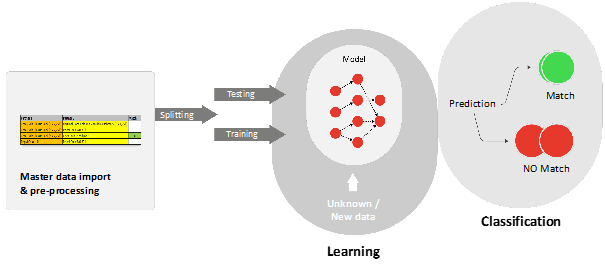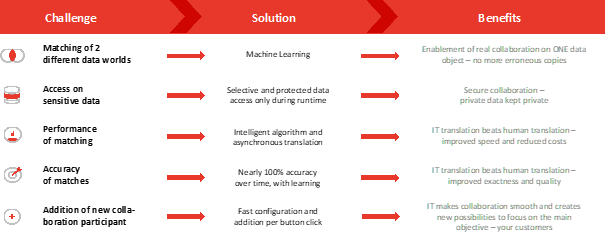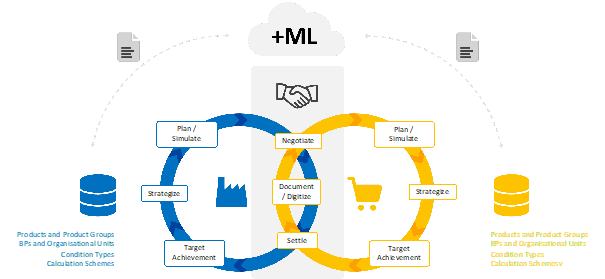Artificial Intelligence in the form of machine learning is already being used reliably in many applications today. Current application areas of machine learning (ML) are the optimisation of business processes and the automation of redundant and thus easily standardisable processes.
Machine learning is an overall term for a range of techniques and tools that enable computers to learn and adapt themselves. Machine learning algorithms help AI learn without being explicitly programmed to perform the desired action. By learning a pattern from sample inputs, the machine learning algorithm predicts tasks and executes them based solely on the learned pattern rather than a predefined program instruction.
Machine Learning – Supervised Learning with Classification
Machine learning also helps business partners work together more easily and efficiently. It makes it possible to delegate more repetitive yet time-consuming work to the computer – the machine.
Technical Challenges
A collaborative form of the machine learning-based application could help consumer goods manufacturers and retailers avoid redundancies and reduce common communication errors in contract processes between business partners, e.g. condition agreement synchronisation.
Graphic representation of a Collaboration Data Transfer between Two Partners and Machine Learning
Digital transformation is taking over the retail industry, not only on a consumer-facing level, but through every decision a retailer makes. McKinsey found that 76% of retailers anticipated improving omnichannel integration by 2021.
This transformation starts with partner collaboration to ensure a smooth interaction between management processes, corporate decisions, value chains, agreements and communication overall. Retailer and manufacturers as well as their partners should be able to coordinate their agreements via a completely digitized process, eg via access to a cloud application. Here, data and documents related to the contract should be managed. “One potential approach would be for instance to provide individually customized views on the same core date embedded in any given agreement”
With the machine learning algorithm, the data related to the agreement can be semi-automatically adapted to the data context of the partner (e.g., articles, organizational units, condition types)
By that, although both partners are working on the same data, each partner is able to see the agreement data in an individual and understandable way.
After this data matching, a seamless transfer to any ERP system is possible, further simplifying the collaboration and reducing maintenance efforts.



